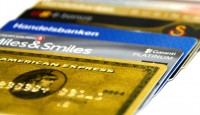Electronic-payments industry efforts to promote card use may be paying off. Significantly more consumers are using credit cards for low-value purchases of $5 or less than they did in 2016. A CreditCards.com survey released Monday found that 17% of consumers typically used their credit cards for these in-store transactions compared with 11% in 2016.
The survey of more than 1,000 U.S. consumers, of whom 674 had credit cards, also found that the number of cardholders who opt for cash, at 55%, and debit cards, at 24%, each decreased by 3 percentage points from 2016.

The survey also asked about consumers’ preferred payment method for single purchases of $500 or more. Credit cards, at 57%, ranked as the top choice, followed by debit cards, 24%; cash, 10%; and checks, 8%. One percent of respondents did not complete this question.
Payment preferences differ by age. Of those between 18 and 36 years old, 53% prefer using a credit or debit card for small purchases, while 70% of baby boomers and seniors use cash for their $5 or less purchases.
Debit cards are more popular with younger consumers. Though no numbers were provided, the survey said twice as many members of Generation X, which is the generation sandwiched between baby boomers and Millennials, as baby boomers used debit cards for large purchases.
Increased overall card activity also shows up in macro-level reporting from the Federal Reserve.
Consumer revolving credit grew at an annualized rate of 3.5% in February to hit $1 trillion for the second time in three months, according to preliminary estimates from the Federal Reserve.
Most revolving credit is on credit cards. Seasonally adjusted revolving credit outstandings slightly topped $1 trillion in December, then dipped 3% to $997.4 billion in January as consumers paid down holiday balances. February’s total was 6.2% above the $942.2 billion in revolving credit a year earlier and is just 2% short of the $1.02 trillion record set in April 2008. At that point, outstandings began declining for three years, bottoming out at $832.5 billion in April 2011—off $188.2 billion, or 18.4%, from their peak before starting their current six-year rise.
—With additional reporting by Jim Daly





